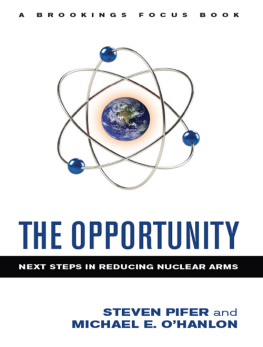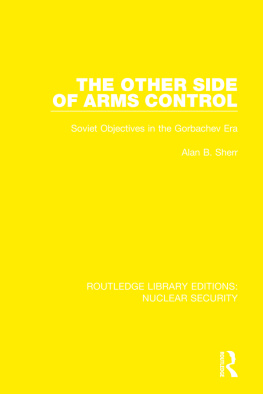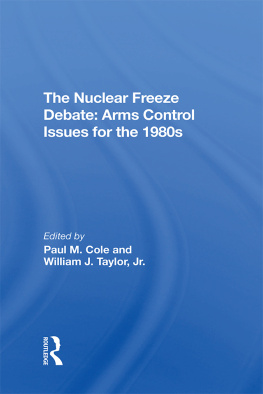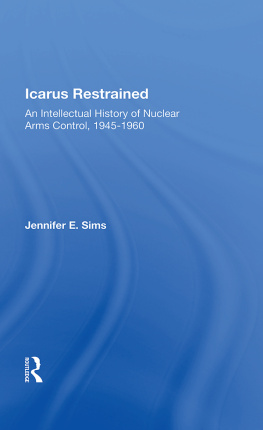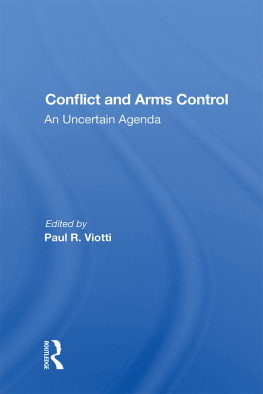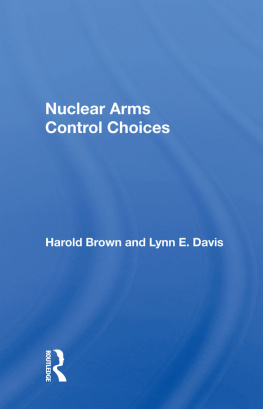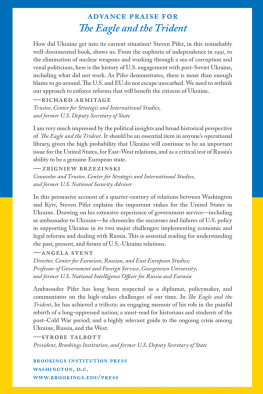F or some observers, nuclear arms control is a dusty relic of the cold war; for others, a futuristic utopian dream about a denuclearized world. As Steven Pifer and Michael O'Hanlon make clearly evident in The Opportunity, however, the topic remains closely tied to some of the most urgent and important security challenges of the day and thus demands close attention and renewed focus.
Classic U.S.-Russia arms control, revived by the Obama administration in 2009, contributed usefully to the so-called Russia reset policy, which paid dividends in broader cooperation on matters such as Iran sanctions policy and logistical supply of NATO troops in Afghanistan. More to the point, it shored up American and Russian nuclear nonproliferation credentials as Washington sought to persuade other countries to eschew nuclear weapons, to sanction states pursuing the bomb illicitly, and to improve security measures on civilian and scientific nuclear activities worldwide.
But there is more to do, and there is a nuclear arms control opportunity in 2013 and beyond. Pursuing one more U.S.-Russia bilateral treaty can further reduce long-range or strategic nuclear systems to perhaps 1,000 deployed warheads on each side. Even more significantly it can allow nonstrategic warheads finally to be captured by arms control. It can also save money if the American military does not need to maintain its nuclear arsenal at the unnecessarily high levels allowed under the New START Treaty. U.S.-Russian bilateral arms control, moreover, can spur and be coupled with multilateral efforts to involve the smaller nuclear powers, which might agree not to increase the size of their arsenals in the future, and to cut off the production of fissile material.
Such steps can also provide more information that will be relevant down the road when future policymakers decide when and if to pursue seriously a world free of nuclear weaponsa worthy goal in many ways, but one whose feasibility we cannot yet truly assess. The Opportunity provides the essential guide to understanding these complex and important issues as well as offers a series of practical and feasible policy recommendations to make America more secure.
STEVEN PIFER is a senior fellow in Foreign Policy studies and the Center on the United States and Europe at the Brookings Institution, where he directs the Brookings Arms Control Initiative. His long diplomatic career included considerable work on nuclear arms reductions and three years as U.S. ambassador to Ukraine.
MICHAEL E. O'HANLON is a senior fellow with the 21st Century Defense Initiative and director of research for Foreign Policy at Brookings, where he holds the Sydney Stein Jr. Chair in International Security. His many books include Bending History: The Foreign Policy of Barack Obama, with Martin Indyk and Kenneth Lieberthal (Brookings, 2012).
COVER ART ISTOCKIMAGES.COM
JACKET BY SESE-PAUL DESIGN
BROOKINGS FOCUS BOOKS
Brooking Focus Books feature concise, accessible, and timely
assessment of pressing policy issues of interest to a broad audience.
Each book includes recommendations for action on the issue discussed.
Also in this series:
Fast Forward: Ethics and Politics in the Age of Global Warming
by William Antholis and Strobe Talbott
Brain Gain: Rethinking U.S. Immigration Policy
by Darrell M. West
The Next Wave: Using Digital Technology
to Further Social and Political Innovation
by Darrell M. West
The Pursuit of Happiness: An Economy of Well-Being
by Carol Graham
Bending History: Barack Obama's Foreign Policy
by Martin S. Indyk, Kenneth G. Lieberthal, and Michael E. O'Hanlon
A BROOKINGS FOCUS BOOK
THE OPPORTUNITY
NEXT STEPS IN REDUCING
NUCLEAR ARMS
Steven Pifer
Michael E. O'Hanlon
BROOKINGS INSTITUTION PRESS
Washington, D.C.
Copyright 2012
THE BROOKINGS INSTITUTION
1775 Massachusetts Avenue, N.W., Washington, D.C. 20036
www.brookings.edu
All rights reserved. No part of this publication may be reproduced or
transmitted in any form or by any means without permission in writing
from the Brookings Institution Press.
Library of Congress Cataloging-in-Publication data is available
ISBN: 978-0-8157-2429-2 (hardcover : alk. paper)
9 8 7 6 5 4 3 2 1
Printed on acid-free paper
Typeset in Sabon
Composition by Cynthia Stock
Silver Spring, Maryland
Printed by R. R. Donnelley
Harrisonburg, Virginia
FOREWORD
SHORTLY AFTER THE UNITED STATES conducted the Trinity test in 1945, President Truman confided to his diary, We have discovered the most terrible bomb in the history of the world. It may be the fire destruction prophesied in the Euphrates Valley Era, after Noah and his fabulous Ark. When Albert Einsteinwho had been indispensable in developing the physics that made the weapon possible but who had been cut out of the Manhattan Projectlearned that Truman had approved use of Fat Man and Little Boy against Japan, he said, simply, Vey iz mir (Yiddish for Woe is me).
Following the Soviet Union's Joe One test in 1949, Joseph Stalin remarked, Atomic weapons can hardly be used without spelling the end of the world. In 1953, one of Stalin's immediate successors, Georgi Malenkov, said publicly that a war waged with modern weapons would be the end of world civilization.
For all the antagonism between them, the superpowers spent decades working out a system that combined mutual deterrence with negotiated arms control to keep the Sword of Damocles from falling.
The string that holds that sword has remained intact since the end of the cold war, albeit frayed in places, because of the success in breaking what had been a defining cycle of earlier historical eras. Before the nuclear age, the story of war and peace followed a recurring and tragic pattern: first came catastrophic war, then came new mechanisms designed to better keep the peace, whose breakdown, in turn, resulted in new bouts of conflict. Following the destruction wrought by the Napoleonic Wars, the peacemakers of Vienna forged the Concert of Europe. When the balance of power undergirding it collapsed, mankind suffered through the war to end all wars. In its aftermath, leaders created the League of Nations, which proved incapable of averting the onset of mankind's most destructive war, World War Two. Yet, out of the ashes of that conflict was created the League's more effective successor, the United Nations. In all of those cases, progress, to the extent it was achieved, was reactive.
During the nuclear age, however, progress has been proactive. Mechanisms to restrain the growth of atomic arms and conflict have been created without the world having to suffer through the ultimate cataclysm. With bitter memories of the destruction unleashed during the first half of the twentieth century, and an appreciation of the untold misery that would result from a nuclear exchange, world leaders, in many cases led by American presidents, had the foresight to establish a series of arms control mechanisms, including the Limited Test Ban Treaty; the Non-Proliferation Treaty; the Strategic Arms Limitation Treaty (SALT); the Strategic Arms Reduction Treaty (START); and the Comprehensive Test Ban Treaty (CTBT).
In April 2010, Presidents Barack Obama and Dmitry Medvedev met in Prague to sign the latest addition to this web of agreements, New START. It builds upon previous progress by requiring further cuts to U.S. and Russian arsenals, limiting both countries to a maximum of 1,550 deployed strategic nuclear warheads and 700 deployed strategic delivery vehicles. In that sense, New START represents a further step toward the long-term objective President Obama had announced one year earlier in Prague: a world free of nuclear weapons. Much clearly remains to be done before the world comes anywhere near attaining that goal. New START did not, for example, address the vast number of nonstrategic nuclear weapons held by the United States and Russia, nor did it place restrictions on the nuclear stockpiles of countries other than the world's two nuclear leaders.

